The signs of ADHD can often be difficult to identify. Once an individual identifies the symptoms and side effects of ADHD, the next step in the recovery journey become clear.
Understanding ADHD
Learn about ADHD
Attention-deficit/hyperactivity disorder, or ADHD, is a condition that is characterized by a persistent pattern of inattention and/or hyperactive and impulsive behaviors that can cause an individual to struggle with functioning in a healthy manner on a daily basis. Individuals with ADHD can have unstable interpersonal relationships, low self-esteem, and poor work performance. Once considered to be a disorder only experienced in childhood, it is now known that symptoms of ADHD can persist into adulthood as well.
A variety of different symptoms may be experienced differently for each individual. Inattention is defined as wandering off task, lacking persistence, having difficulty sustaining focus, and being disorganized. Hyperactivity is excessive motor activity when it is not appropriate, excessive fidgeting, or extreme talkativeness. Finally, impulsivity can include hasty actions that occur in the moment without any previous thought. When such actions occur, they can be potentially harmful for the individual. Impulsivity can also be the result of a person’s inability to delay gratification or may be displayed as making important decisions without thinking through the long-term consequences.
Although ADHD can manifest in childhood, it is possible that this disorder can be diagnosed later in life. ADHD may first be noticeable when a child is a toddler, but it can be hard to distinguish excessive motor activity from the normative behavior of a child before the age of 4. It is most often discovered when a child starts school and the inattention becomes more prominent and begins to cause impairment in scholastic functioning. In most individuals, the symptoms of motor hyperactivity become less obvious, however problems with restlessness, inattention, poor planning, and impulsivity seem to remain. In many instances, children with ADHD continue to grapple with symptoms into their adult years.
While ADHD can cause many problems for individuals, it is a treatable disorder that can be managed via a combination of medication and therapies. Treatment for ADHD is often similar for both young people and adults, and can involve a combination of pharmaceutical interventions, various therapeutic supports, and care for any other mental health conditions that may also be present.
Statistics
ADHD statistics
It is estimated that ADHD impacts 2.5% of adults. In the general population, ADHD is diagnosed more frequently in males than in females, with a male-to-female ratio of about 1.6:1. Females, however, are more likely than males to present with inattentive symptoms of the disorder as opposed to males who are more likely to display hyperactive symptoms.
Causes and Risk Factors
Causes and risk factors for ADHD
While researchers have found a number of contributing factors that can lead to the development of ADHD, there is not one specific cause given for the development of the disorder. It is believed that the development of this disorder is a combination of a number of factors working together, some of which include:
Genetic: ADHD has been found to run in families and it has been indicated that genetics may play a role in the development of ADHD. Having a first-degree relative, such as a parent or sibling, with ADHD increases the risk for developing the disorder. Many studies done with families, twins, and adopted children have all indicated that ADHD is a heritable condition as well.
Environmental: There is an increased risk for developing ADHD if a person has been exposed to polychlorinated biphenyls (PCBs) before birth. Furthermore, if one was exposed to nicotine, alcohol, or other substances prenatally, there is also a risk for developing ADHD. Lastly, if a person experiences some sort of trauma, is surrounded by violence, or is the victim of some sort of abuse, there is a greater likelihood for ADHD symptoms to develop.
Signs and Symptoms
Signs and symptoms of ADHD
There are a variety of signs and symptoms that can occur in individuals with ADHD. Because of this, it can make detecting and diagnosing this disorder challenging. The severity and frequency of symptoms displayed depend on the type of ADHD the individual has. Some of the symptoms can include:
Inattentive symptoms:
- Fails to pay close attention to details or makes careless mistakes
- Fails to complete workplace tasks
- Difficulty organizing tasks and activities
- Difficulty completing tasks
- Difficulty sustaining attention
- Restlessness
- Mood swings
- Frequently loses things
- Easily distracted by irrelevant stimuli
- Does not seem to listen when directly spoken to
- Does not follow through on instructions
- Often avoids or dislikes tasks that involve sustained mental effort
- Forgetful in daily activities
Hyperactive-impulsive symptoms:
- Leaves seat in situations when seating is required
- Runs about or climbs on things when it is inappropriate to do so
- Unable to engage in activities quietly
- Often talks excessively
- Fidgets or taps hands or feet
- Trouble handling stresses
- Extreme temper
- Often interrupts or intrudes on others
- Blurts out answers before question is finished
- Difficulty waiting ones turn
Effects
Effects of ADHD
If the symptoms of ADHD are not properly managed, they can cause a variety of problems in an individual’s life. Some of these effects can include:
- Social rejection
- Social isolation
- Substance abuse and addiction
- Incarceration
- Low self-esteem
- Poor occupational performance
- Depression
- Self-harm
- Elevated interpersonal conflict
- More traffic accidents and violations
- Family and relationship problems
- Additional mental health concerns
Co-Occurring Disorders
ADHD and co-occurring disorders
It is common for those with ADHD to suffer from other co-occurring disorders at the same time. The most common co-occurring disorders are:
- Intermittent explosive disorder
- Substance use disorder
- Personality disorders
- Obsessive-compulsive disorder (OCD)
- Tic disorders


